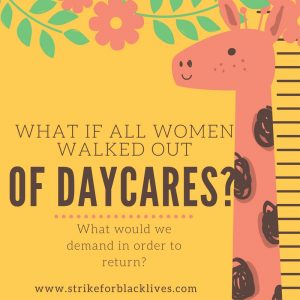
You want to jump up and shout because the students on your campus or the individuals in your community are calling out structural bias and even protesting, organizing, and making real headway against it. Or you’re wondering what the hell is going on. Either way the young people need to be supported. [Tweet “Here are the top five ways to support young people on your campus or in your community as they lead us through this transformative time in history.”]
#1. Listen:
I know it is very tempting to co-opt the conversation. You’re older. You have more education. Some of us were even student activists in our day. But it is not your time. Yes, you feel as if you could solve all of this in two meetings and a letter. But here’s the truth: systems of dominance do not remain entrenched by remaining static. The systems change. They adapt themselves to the times. These brilliant students are equipped to manage digital era racism in a way that we have not been raised to do. They got this. So it is up to us on our campuses or in our non-profits, or in whatever stakeholder communities to provide space for them to vent, to organize, and to rest. They need to look around them and see us confidently getting their backs. What does this look like? Well it looks like allowing the classroom to be used as organization space. It looks like understanding that assignments may have to be creatively aligned with Justice work. It looks like chilling the fuck out.
#2. Refer:
Trauma and toxic stress are real. Often times the students have been attacked with the full virulence of racism. The state has used spray, gas, batons, and yes, bullets against them. The wonderful social media tools are also places where they’ve been re-traumatized by the images and the 24 hour news cycle that a group of people two generations older than them created. Refer them to the radical counselors on campus. Refer them to Reiki. Refer them to yoga. Refer them to the progressive spiritual leaders. Refer them to safe space for self-care.
#3. Connect
One advantage of being faculty on the campus is the ability to sign documents that allow speakers and presenters to come to campus. Now is a great time for the still living student leaders of previous generations to come and build with our present student activists. This intergenerational collaboration is truly transformational. Build in closed-door sessions as well as public talks. Invite revolutionary poets to campus. Invite young elected officials to campus. Move funds around creatively to get it all done. Use your own funds to get it all done.
#4. Confront: (in the classroom)
Do not avoid these conversations in your classrooms. Do not avoid these conversations in your board rooms. Math teachers can look at the statistical proof of bias in The New Jim Crow. Science teachers can look at medical racism in The Immortal Life of Henrietta Lacks. Couch the whole conversation in kindness. Here’s what I mean: your classroom or your boardroom should have a mission statement that includes believing that every student and every client is valuable. This should be on your syllabus and this provides the imperative of kindness. When Mr. overtly racist student begins to vocalize refer him to the class mission or the institutional mission. “Dear Mr. Overtly Racist, in this class/board room, we follow the institution’s mission of kindness. Sit. Down.”
#5. Again, Confront: (colleagues)
Do not allow your colleagues to stop the conversations. You will need allies. (It is not healthy to feel as if you are the only person on the board or in your faculty that addresses issues of institutional bias.) Then you must (as we say in Mississippi) “make that dog behave.” Find out what your institution’s diversity and inclusion policy is. Find out who is the diversity and inclusion officer. If these things are not present find out how accreditation is affected by the lack of these items. Use the same bureaucracy that serves institutional bias to break institutional bias. Some campuses and institutions have a wonderfully complex strategic plan for diversity. Others are just at the stage of asking a volunteer committee of people to study the diversity on campus. Yes, I know in this day and age that is negligible, but we have to start somewhere. Get on that committee. If you have too many commitments, find other ways to support that committee, or do 1 through 4.
_________________________________________________________________________
_________________________________________________________________________


